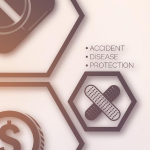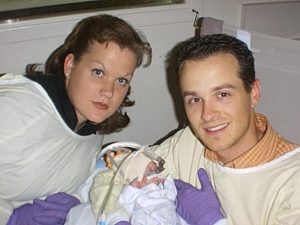Mark Postma, AAA President & Asbel Montes, AAA Payment Reform Chair
The recent merger of Aetna/CVS may be the catalyst that finally brings the change that the ambulance industry has been advocating for over the past several years. This new healthcare strategy supports the ambulance industry’s ideas that alternative patient destinations are needed in EMS.
To explain this better, one must understand the current state of ambulance reimbursement via the 911 system or equivalent. At this point in time most commercial payers of healthcare (Insurance) as well as Medicare will not pay for 911 ambulance transportation to any destination other than the “nearest appropriate” hospital based emergency room; arguably, the most expensive and least efficient form of healthcare. The continuation of this policy discounts the advanced capabilities of both EMS and new clinical settings and the savings that can be achieved through innovative change. In addition, at the same time that the cost of healthcare in general is increasing, reimbursement from all payers is decreasing, creating a significant challenge for providers. Medicare consistently pays providers below cost for providing life-saving services and state Medicaid agencies are consistently underfunding the critical services to the un- and under-insured populations that have allowed intermediaries to delay or not pay ambulance services.
Much of the U.S. population believes that vital 911 EMS services or the equivalent are provided free or included in their local property taxes. This is generally not the case. While EMS services must be at the ready on a 24/7/365 basis, they are not paid for being on call, but only when the service is used.
Many communities have governing rules that require 911, or the equivalent, paramedic services to arrive on-scene within 8-12 minutes of receiving the call. This cost of readiness is VERY expensive. Skyrocketing personnel costs, ambulances, equipment, and other high cost drugs only exacerbate an already fragile reimbursement structure. Although recent articles about calling Uber or Lyft sound intriguing, these drivers and cars are not prepared for any type of injury. Nor can they alert the hospital in critical situations to have the heart cath lab ready or a trauma surgeon on standby, shortening the time to definitive care when time matters most. Emergency paramedics are highly trained, are nationally and/or state certified, and provide services on state regulated ambulances equipped to manage all types of emergencies. Ambulances are also often strategically placed to arrive in that 8-12 minute response time requirement. However, there is one piece missing from the ambulance scenario that allows for Uber/Lyft to succeed; your personal credit card is on file with them. NO GUARANTEED PAYMENT, NO TRANSPORT. The cost of providing ambulance services “on call” with life-saving equipment, medications, and personnel at the ready is steep. When you consider the many regulations providers must adhere to outside of patient care, the cost increases even more. This misunderstanding of the cost often results in patients being stunned when they receive a bill for services provided and feel that it is excessive. However, comparing the cost of a life-saving ambulance transport to an Uber/Lyft ride is like comparing the cost of building a house to putting up a tent.
On the other hand, these highly trained paramedics, with vehicles that are comprehensively (medically) equipped to meet the highest safety standards, have no credit card on file. They do not treat you based on your ability to pay. In fact, approximately less than half of ambulance patients have insurance, and when commercial insurance does pay, they are increasingly paying only a percentage of the total bill, leaving their insured left to pay the balance. In a time of an emergency, insurers should not place an additional burden on their insured through underpayment or claiming out of network status. In addition, although many emergency 911 calls begin as a “frantic call for help,” not all are life threatening and require the highest level of care; however, they do need some type of a health care intervention.
It is this high volume of low acuity patients who do not have primary care physicians and who currently by law must be transported to hospitals that continue to bottleneck emergency rooms. This bottleneck then requires ambulances to be “on the wall” at local hospital emergency rooms. The cost to the 911 EMS system rapidly begins a domino effect where all the patients begin to be diverted/directed to other hospitals causing an overflow to the next hospital. In large EMS systems, this domino effect can bring emergency rooms at all available hospitals to capacity quickly. EMS units are unable to go on additional emergency calls because they are caring for a patient while waiting on hospital staff to become available to take over. They also cannot leave that hospital with the patient to go to another hospital due to federal laws that prohibit this movement.
So why does the AETNA/CVS excite the leaders of EMS organizations? Most people assume that since this acquisition just occurred, Walgreens will probably follow suit with another insurer. Other local pharmacy “CVS types” may partner with local hospitals or medical insurance cooperatives as well. This leads the ambulance industry to believe that the capacity to transport patients to alternative locations could greatly change the landscape of EMS. The idea that local CVS/Walgreens/clinics could receive low acuity patients breaks open the bottleneck and can provide several benefits for the ambulance service and patient. One benefit is that adding these stores/clinics greatly increases the resources for caring for low acuity patients and could potentially double the locations an ambulance can transport to, which will allow for quicker transport times and increase efficiencies. Lastly, and most importantly, diverting the low acuity patients to these additional community resources would reduce overflow in the emergency departments and allow true emergency patients to be transferred over more quickly to receive the higher level of care they require. This scenario is also a win for the patient. They could be transported to the most appropriate location to care for their needs and therefore can be billed more accurately for services they require rather than the emergency department fees which are usually costlier.
To make this happen, obviously the CVS system needs to evolve to receive these patients. More importantly, ambulance reimbursement by federal, state, and private payers must evolve to meet the demands of the market. Due to the complexities of how EMS services are provided because of state and local regulations, mandatory response times, service area parameters, and others, reimbursement for these services must be adequately paid for by Medicare, Medicaid, and private insurers. Today EMS agencies can only “hope” that their patients have a source of payment!
Although one would think that this state of concern for EMS services is being monitored, it currently has only a very small voice in the healthcare continuum. Federal agencies seem to want to look at what EMS will look like in 10 to 25 years rather than where EMS is today and where it can develop over the next few years. EMS reform needs to happen soon to save these systems from bankruptcy and/or the public from higher taxation.
We hope that this merger will be the beginning of alternative EMS/ambulance destinations with allocated reimbursements that meet the costs of providing high quality, efficient, and necessary 911 ambulance services.
Mark Postma, COO, Sunstar Paramedics
American Ambulance Association, President
Works for Sunstar Paramedics, Florida’s largest EMS provider
MPostma@sunstarems.com, 727-224-0295
Asbel Montes, Vice President, Acadian Ambulance Service, Inc.
American Ambulance Association, Chair-Payment Reform Committee
Works for Acadian Ambulance Service, Inc., Louisiana’s largest EMS provider
Asbel.Montes@acadian.com, 337-291-3310











